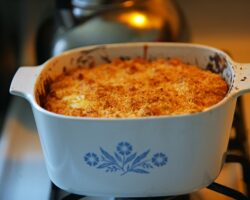Kitchen life seems to us familiar and uncomplicated, therefore we never think about the fact that we are doing something wrong. However, even here there are nuances that many are unaware of. For example, do you know how many cutting boards should be in the kitchen? Or how to defrost meat properly? In this article, we’ll cover the most common mistakes and misconceptions. Check yourself!
Mistake # 1: cutting everything on one board
The most common mistake is using one board for all products. This is wrong primarily for hygienic reasons. Fresh vegetables or fruits should not be cut on the same board where raw meat was previously cut. The reason for this is bacteria that can remain in the microcracks of the board and get onto other products.
The minimum kitchen set should have three cutting boards: one for raw meat and poultry; the second – for vegetables, herbs, cheese, sausages; the third is for bread (you can still cut fruit on it). If you often cook fish, then get a fourth board as well, because any fish has a rather strong smell that is absorbed into the work surface for a long time.
Mistake # 2: one knife for everything
Many people believe that only a professional cook needs several knives, but in everyday life you can limit yourself to one, if only he could cut well. However, different types of knives have been invented and developed precisely in order to make it more convenient to cut certain foods.
In the kitchen, it is enough to have four main knives: a bread knife, a vegetable peeling knife, a utility knife and a chef’s knife.
The chef’s knife is ideal for cutting meat and shredding vegetables. A utility knife with a thin long blade is needed for slicing sausages, lightly salted fish and cheese. A small and short vegetable peeler will help you gently pull out potato eyes or peel an apple. Well, a knife with a long blade and small teeth will help you effortlessly cut fresh bread with a crispy crust.
Mistake # 3: one sponge for dishes and sinks
It is imperative to use different sponges to wash sinks and dishes. The sink is generally considered one of the dirtiest places in the house. A fatty deposit settles in it and a very large number of microbes accumulate. It should be cleaned regularly, preferably immediately after washing the dishes or at least once a day.
Sponges also accumulate microbes, so they need to be changed quite often: about every two weeks.
Mistake # 4: we rarely change kitchen towels
We use kitchen towels even more often than sponges, so they can also become a breeding ground for germs. They need to be changed every 3-5 days, and washed in hot water and separately from clothes.
It is best to use paper towels for wiping dishes; this will be much more hygienic.
Mistake # 5: using cracked and chipped dishes
All chipped dishes should be thrown away immediately, because cracks are a favourable environment for microbes. This applies not only to ceramic cups and plates, but also to enamel cookware. The operating instructions for such devices clearly state that it is impossible to cook in them after the appearance of scratches.
Follow the rules of care and use silicone or wooden spatulas, then the dishes will last much longer.
Mistake # 6: placing food on the refrigerator shelves incorrectly
When storing food in the refrigerator, we forget that the temperature on different shelves is slightly different.
In single-compartment refrigerators, the coldest shelf is at the top, next to the freezer. In two-compartment refrigerators, the lowest temperature is on the bottom shelf. This must be borne in mind for perishable foods. To keep them fresh longer, they are best placed on the coldest shelves.
Mistake # 7: defrosting meat in water
For quick defrosting, meat is often poured with water and left at room temperature for a couple of hours. However, this method not only gives room for the reproduction of bacteria, but also badly affects the taste. To prevent the meat from becoming tough, it must be thawed slowly in the refrigerator. Of course, this takes longer: about 12 hours, but the meat will remain the same as it was before freezing and will not lose its juices.
If you try to avoid these mistakes and follow our simple recommendations, then your kitchen life will become safer and more comfortable!






